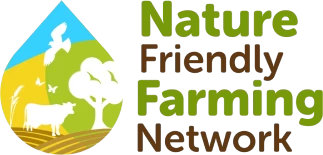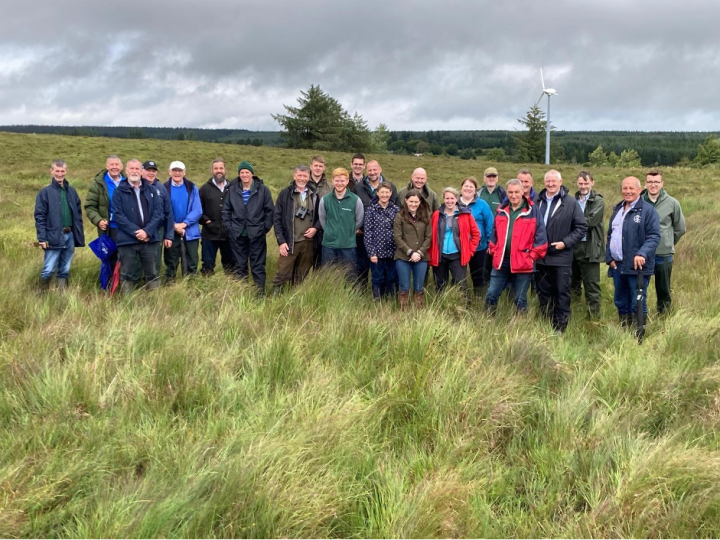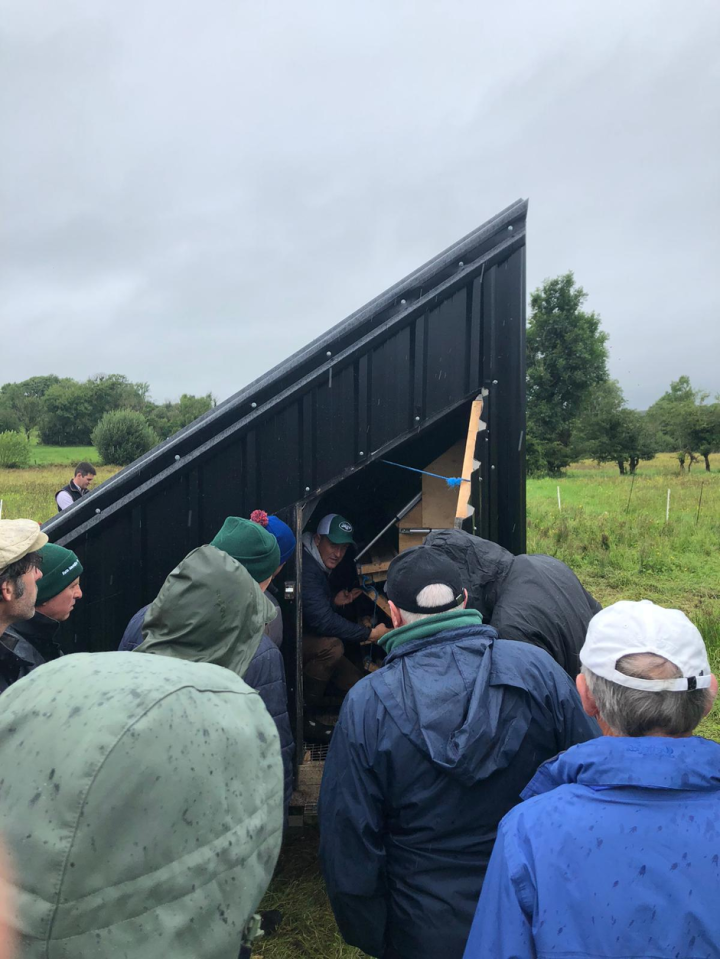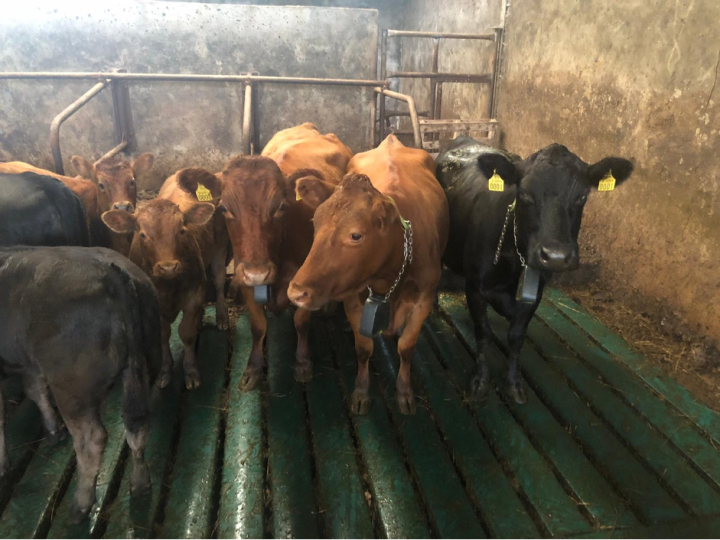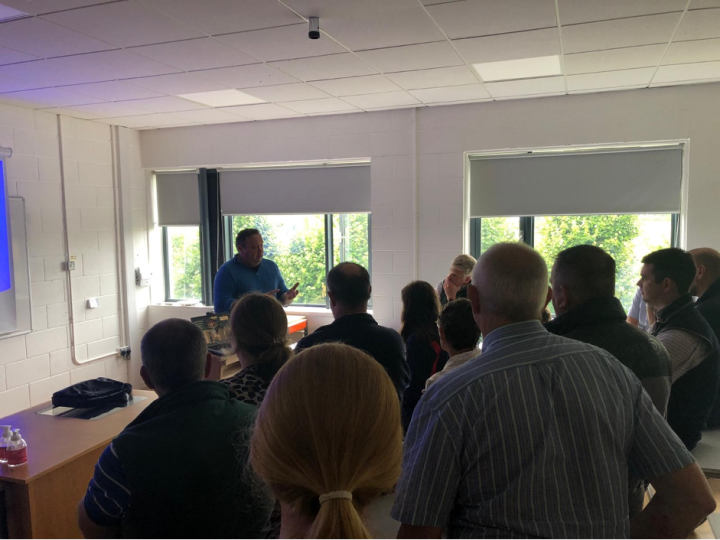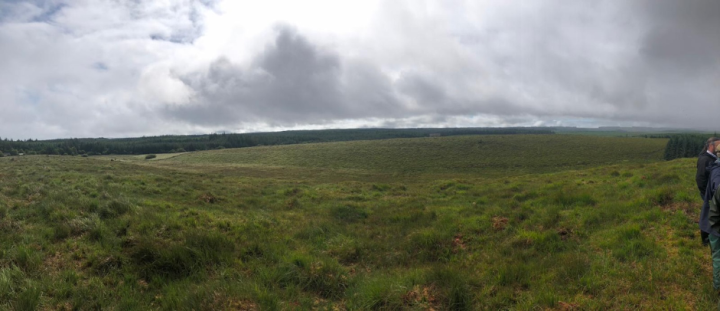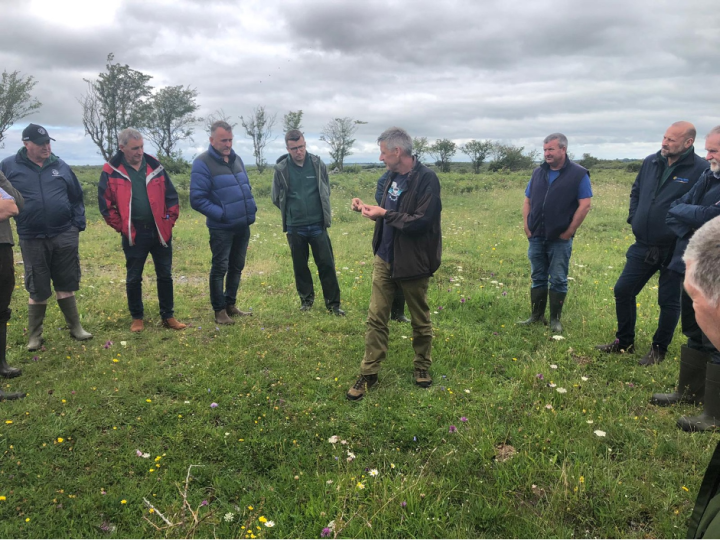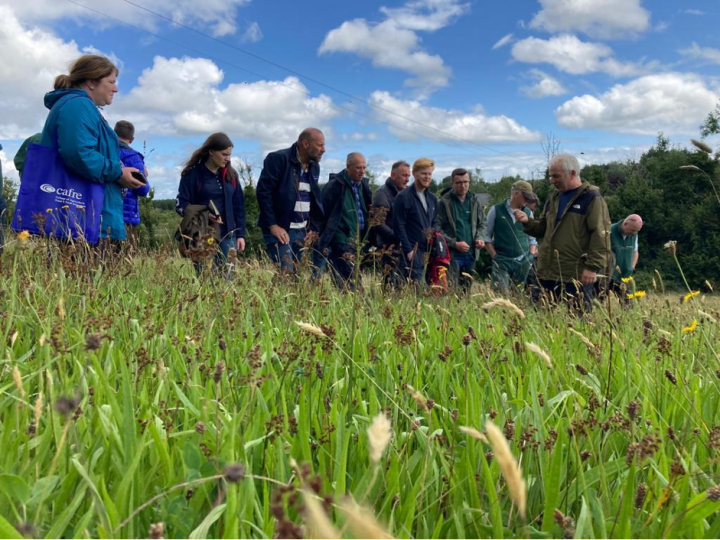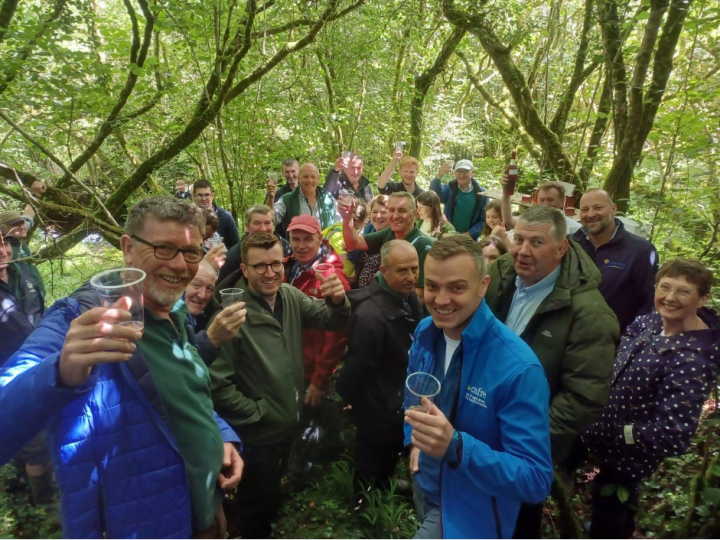Next stop: Presentations from James Moran and Brendan Dunford
In the evening, we were joined by James Moran and Brendan Dunford, who provided two informative presentations. James demonstrated the importance of a range of different land types, memorably saying: “There is no such thing as bad land.”
While productive ground is important for food production, less favourable ground is important for numerous ecosystem services: flood mitigation, carbon storage, habitat provisioning, good water quality, as well as the cultural value they provide to our countryside. However, farmers are not rewarded for maintaining less favourable ground in good condition, meaning it often deteriorates into poor states.
James was part of the team that worked closely on results-based payments for farmers, using the Burren to highlight this. Farmers were given options of actions they could take to maintain or improve their ground to provide ecosystem services. It was then up to the farmer how much they wanted to take on, and the more they took on, the more they could potentially be rewarded. Ground was assessed periodically and given a score out of 10. Higher scores meant higher financial rewards. The key thing was that the process was fair to both the farmers and the funders.
Brendan Dunford, who was integral in the development and success of the BurrenBeo Trust, which has helped shape the Burren into the unique landscape it is today, explained how they made this happen. Results-based schemes often aren’t the norm, but if managed correctly and funded appropriately, they may be the most effective way to maintain and improve our rural areas. By providing clear actions farmers can take and being transparent about what scores well and what may lead to a reduction in score (poaching, access to watercourses, encroachment of bracken/scrub), farmers can make informed decisions about how they want to manage their ground.
DAY 2 – Hen Harrier Project County Galway
Day two began with a long and precarious bus drive to the Slieve Aughty area; with our 42-seater bus definitely unsuitable for the narrow country roads that most cars would struggle down, but we made it safe and sound!
We visited a farm that has been involved in the Hen Harrier project, which is working to protect the habitats of the endangered Hen Harrier in the area. Hen Harriers are ground nesting birds that require specific vegetation for nesting and large areas for hunting that, without farming, would be almost impossible to maintain. We visited an area of commonage where three different farmers graze a 60ha upland heath, mostly with cattle. These cattle feed mostly on molinia grass which can quickly take over large areas if not managed properly.
Most of our farmers, who previously thought this grass had little nutritional value, were pleased to find out from local expert Caroline O’Sullivan that it’s when you graze these areas that really matter. Molinia grass has 70% nutritional value of ryegrass in April and May, losing some into June, after which it loses almost all of its digestibility for livestock. Rory O’Reilly, who farms the area, explained how they use a combination of electric fencing and water supply to control grazing paddocks, shutting off any of the five water troughs on site as necessary because cattle will generally not stray too far from their water source.
This is a voluntary scheme which farmers can decide to enter. They are not told how to farm the ground, just the outcomes that are required, and advice is given where sought. They can graze however and whatever they want on the ground, and similar to the Burren, the ground is assessed annually, and their score will determine the payment received.
